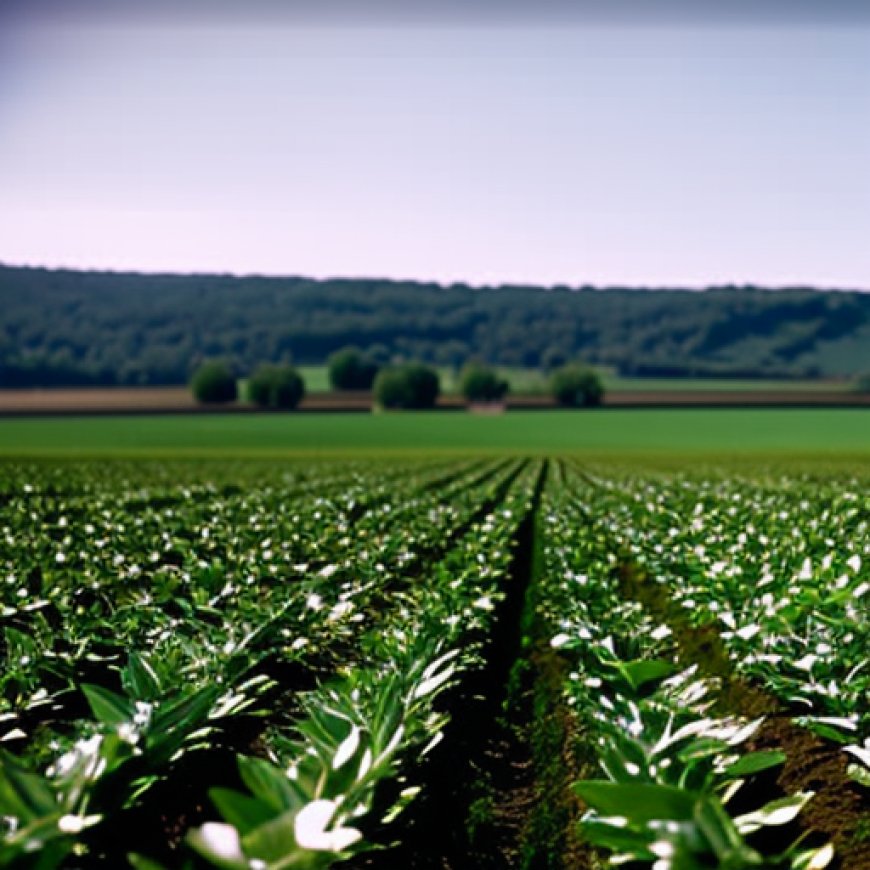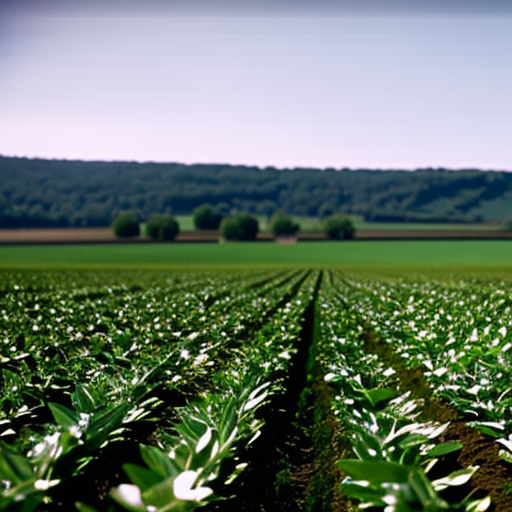Rethinking agricultural productivity | D+C – Development + Cooperation
Rethinking agricultural productivity D+C Development and Cooperation


Sustainable Agriculture: Rethinking Productivity for a Better Future
The Challenge of Feeding a Growing World Population
Humanity is facing the challenge of feeding a growing world population with limited resources. To address this challenge, it is crucial to increase agricultural productivity. Traditionally, agricultural productivity is defined as producing more output (harvest) with the same input (area, soil, capital, labor) or the same output with less input. Economists measure agricultural efficiency using the metric of “total factor productivity” (TFP), which allows for comparisons among nations and tracks progress.
However, TFP fails to consider the long-term effects of current agricultural practices on soil, biodiversity, health, and people. This oversight is a significant flaw, as short-term productivity gains may undermine future productivity in various ways. For example, intensive tilling methods can harm the soil, fertilizers may cause health issues, and the humus layer may deteriorate due to insufficient regeneration periods. By neglecting these concerns, TFP presents an incomplete picture.
Negative Consequences of India’s Green Revolution
India’s “green revolution,” initiated in the 1960s, aimed to increase agricultural productivity in response to famines. While it successfully fed the growing population and reduced rural poverty, the adverse effects are now increasingly evident. The water-intensive cultivation of rice in Punjab has led to soil degradation and projected desertification within 25 years. Farmers are forced to rely on expensive genetically modified seeds and fertilizers, resulting in substantial debts and a high number of suicides. Hazardous agrochemicals have also contributed to Punjab’s reputation as India’s “cancer capital.”
Metrics like TFP may suggest increased productivity, but they fail to account for long-term net gain for the planet and people. If agricultural practices undermine the sustained productivity of nature or people, hindering their ability to lead fulfilled and healthy lives, they should not be labeled as productive.
Productivity versus Reproductivity
A shift in perspective on agricultural productivity is necessary. Instead of focusing solely on short-term surpluses, we should assess how agricultural practices can be reproduced in the future. Therefore, it is more appropriate to consider the term “reproductivity” rather than “productivity.”
The conversation around agricultural productivity is shifting towards more sustainability. Agroecology, permaculture, agroforestry, and regenerative agriculture are gaining interest as approaches to redesigning agricultural systems. There is also a strong emphasis on involving local communities in decision-making processes.
Measuring Ecological and Social Sustainability
Measuring agricultural (re)productivity, regenerativity, or sustainability is challenging. It requires a broader time frame and quantifying long-term consequences, which is difficult due to the inaccuracy of current climate models. The complexity increases when considering long-term ecological and socio-economic effects.
Farmers adopting more sustainable methods need to monitor progress. Modern technology can be used to quantify soil functional biodiversity, water storage capacity, and carbon sequestration potential. However, measuring above-ground biodiversity effects is even more challenging and requires various data points from satellite data, bio-acoustics, and environmental DNA (eDNA) samples. Making assumptions about future developments is also necessary.
Financing is Crucial for Sustainable Agriculture
Quantifying sustainable agriculture is essential for attracting financial rewards from political schemes, customers, and investors. Agricultural (re)productivity needs to be sustainable regarding finance as well. Farmers need assurance of compensation during the transition period when changing practices may decrease yields before long-term benefits are realized.
Recent developments in the debate on payments for ecosystem services provide hope for innovative rewards for farmers adopting reproductive practices. However, there is still much work ahead in redefining how we measure agricultural productivity in the future.
References
- Schragmann, H., 2024: Produktivität neu denken. Vom Trennungs- zum Vermittlungsbegriff (“Rethinking productivity. From the concept of separation to the concept of mediation” – available in German only). Springer.
Hannah Schragmann holds a PhD in Economics, focusing on new productivity metrics. She is Chief Transparency Officer of Impact Hero, an impact start-up, and Head of Biodiversity at Soilytix, a business for soil biodiversity quantification.
SDGs, Targets, and Indicators Analysis
1. Which SDGs are addressed or connected to the issues highlighted in the article?
- SDG 2: Zero Hunger – The article discusses the challenge of feeding a growing world population with limited resources.
- SDG 3: Good Health and Well-being – The article mentions the health issues caused by the use of fertilizers and hazardous agrochemicals.
- SDG 12: Responsible Consumption and Production – The article highlights the need for more sustainable agricultural practices.
- SDG 13: Climate Action – The article mentions the climate crisis and its impact on agriculture.
- SDG 15: Life on Land – The article discusses the long-term effects of current agricultural practices on soil, biodiversity, and the environment.
2. What specific targets under those SDGs can be identified based on the article’s content?
- SDG 2.4: By 2030, ensure sustainable food production systems and implement resilient agricultural practices that increase productivity and production, that help maintain ecosystems, that strengthen capacity for adaptation to climate change, extreme weather, drought, flooding, and other disasters, and that progressively improve land and soil quality.
- SDG 3.9: By 2030, substantially reduce the number of deaths and illnesses from hazardous chemicals and air, water, and soil pollution and contamination.
- SDG 12.4: By 2020, achieve the environmentally sound management of chemicals and all wastes throughout their life cycle, in accordance with agreed international frameworks, and significantly reduce their release to air, water, and soil to minimize their adverse impacts on human health and the environment.
- SDG 13.3: Improve education, awareness-raising, and human and institutional capacity on climate change mitigation, adaptation, impact reduction, and early warning.
- SDG 15.3: By 2030, combat desertification, restore degraded land and soil, including land affected by desertification, drought, and floods, and strive to achieve a land degradation-neutral world.
3. Are there any indicators mentioned or implied in the article that can be used to measure progress towards the identified targets?
- Soil functional biodiversity – This indicator can be used to measure the progress of sustainable agricultural practices.
- Potential to store water and carbon – This indicator can be used to assess the impact of agricultural practices on water and carbon storage.
- Above-ground biodiversity effects – This indicator can be used to measure the impact of agricultural practices on biodiversity.
- Number of deaths and illnesses from hazardous chemicals and pollution – This indicator can be used to track progress in reducing health risks associated with agricultural practices.
SDGs, Targets, and Indicators Table
| SDGs | Targets | Indicators |
|---|---|---|
| SDG 2: Zero Hunger | 2.4: Ensure sustainable food production systems and implement resilient agricultural practices | – |
| SDG 3: Good Health and Well-being | 3.9: Reduce deaths and illnesses from hazardous chemicals and pollution | Number of deaths and illnesses from hazardous chemicals and pollution |
| SDG 12: Responsible Consumption and Production | 12.4: Achieve environmentally sound management of chemicals and wastes | – |
| SDG 13: Climate Action | 13.3: Improve education and capacity on climate change mitigation and adaptation | – |
| SDG 15: Life on Land | 15.3: Combat desertification, restore degraded land and soil | Soil functional biodiversity, potential to store water and carbon, above-ground biodiversity effects |
Behold! This splendid article springs forth from the wellspring of knowledge, shaped by a wondrous proprietary AI technology that delved into a vast ocean of data, illuminating the path towards the Sustainable Development Goals. Remember that all rights are reserved by SDG Investors LLC, empowering us to champion progress together.
Source: dandc.eu

Join us, as fellow seekers of change, on a transformative journey at https://sdgtalks.ai/welcome, where you can become a member and actively contribute to shaping a brighter future.







